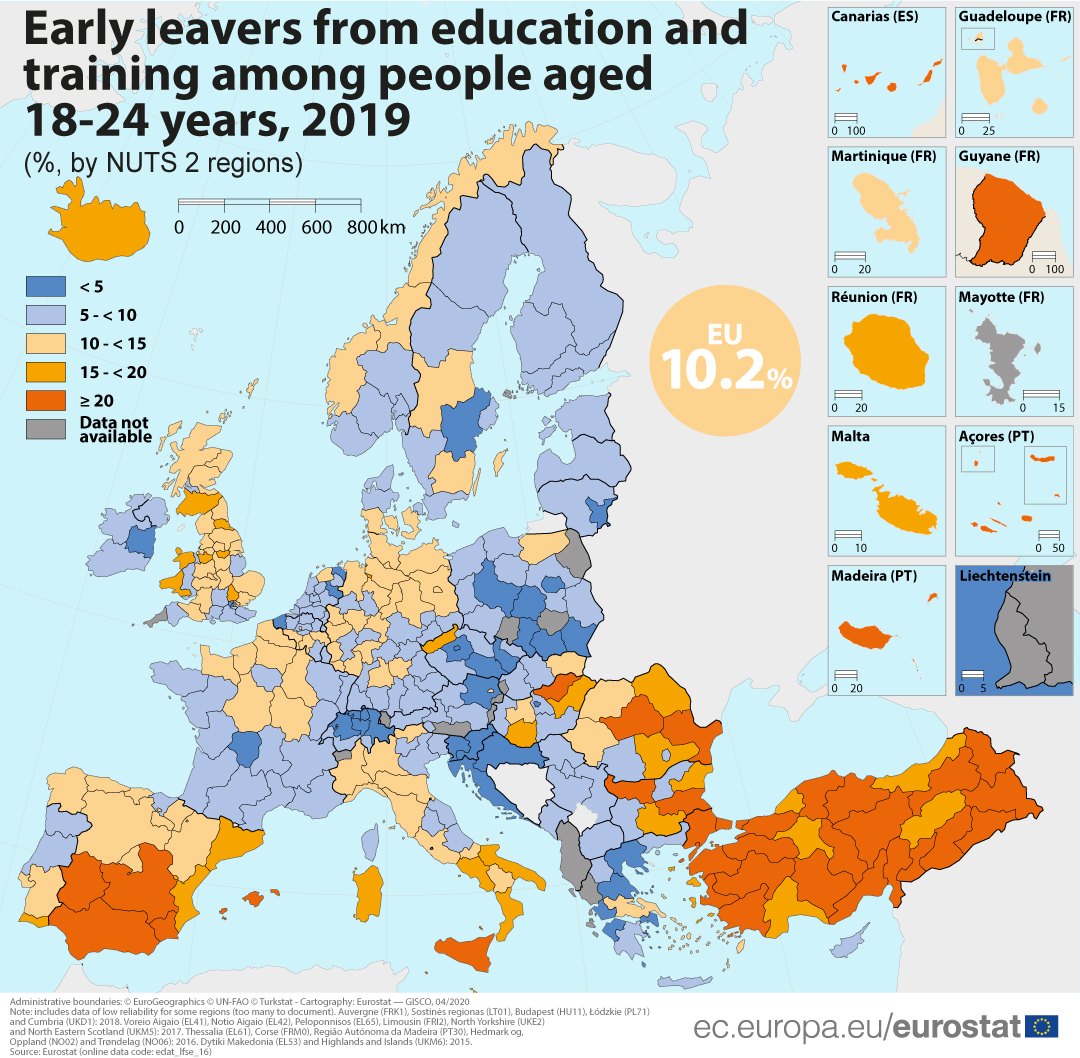In 2019, the share of early leavers from education and training in the EU stood at 10.2%. In other words, one in ten individuals aged 18-24 years with at most a lower secondary level of educational attainment (ISCED 0 - 2) was not engaged in any further education and training in the four weeks preceding the survey.
The Europe 2020 target is to reduce the rates of early school leaving in the EU to below 10% by 2020. In 2019, this share was already below 10% in a majority of regions (NUTS level 2) with some of the lowest shares concentrated in eastern Europe and in capital regions.
Among the EU regions, the lowest share of early leavers from education and training (1.7%) was recorded in the coastal/island region of Jadranska Hrvatska (Croatia). There were three other regions where no more than 1 in 50 young people were early leavers: the capital regions of Czechia and Lithuania — Prague and Sostinės regionas (both 1.9%) — and the Greek region of Kentriki Makedonia (2.0%).
Source dataset: edat_lfse_16
The highest regional shares of early leavers from education and training were often concentrated in island and/or peripheral regions of the EU, where it is likely that a disproportionately high share of students have to leave home if they wish to follow a particular tertiary education course or programme, leaving behind a higher concentration of early leavers.
The share of early leavers from education and training was also relatively high in most of southern Europe and across most of Bulgaria and Romania. The southeastern Bulgarian region of Yugoiztochen had the highest share of early leavers, at 27.2% in 2019.
Although the proportion of early leavers from education and training was comparatively quite low in western EU Member States, their former industrial heartlands often recorded higher shares, for example: Province de Liège (Belgium) or Nord-Pas de Calais (France).
Would you like to know more about education and training statistics at regional level?
You can find more information in the dedicated chapter of the Eurostat regional yearbook 2020 as well as in the corresponding maps in Statistical Atlas.
Note: The European Union (EU) includes 27 EU Member States. The United Kingdom left the European Union on 31 January 2020. Further information is published here.
To contact us, please visit our User Support page.
For press queries, please contact our Media Support.


